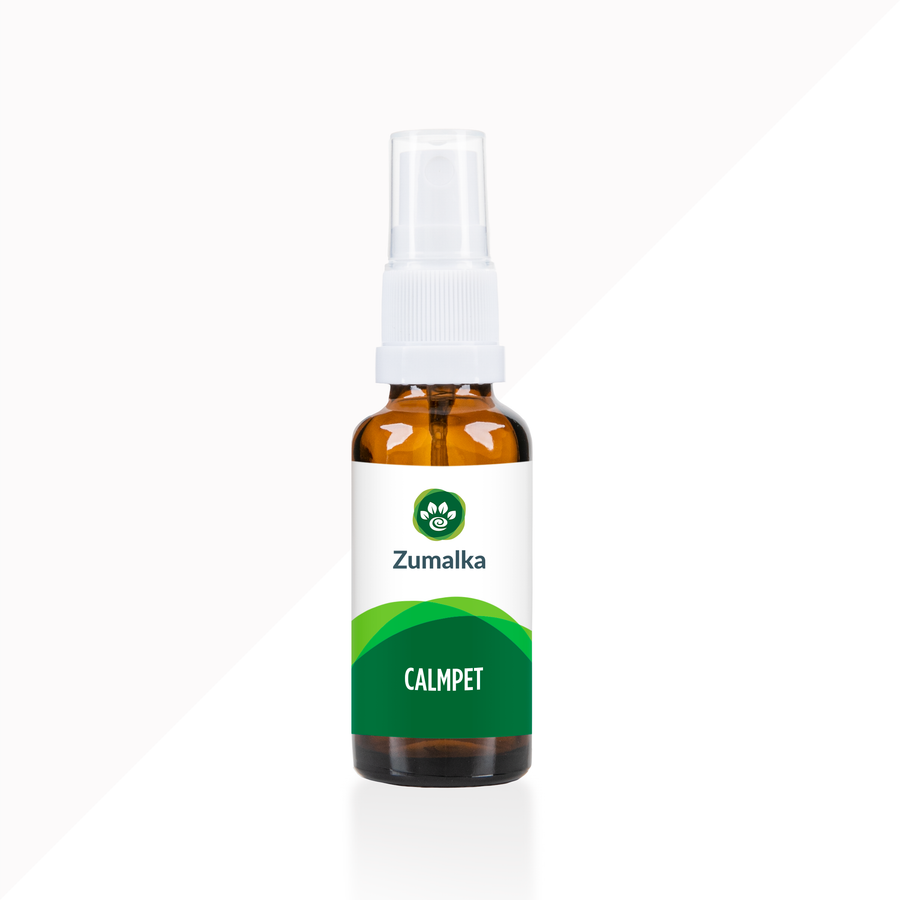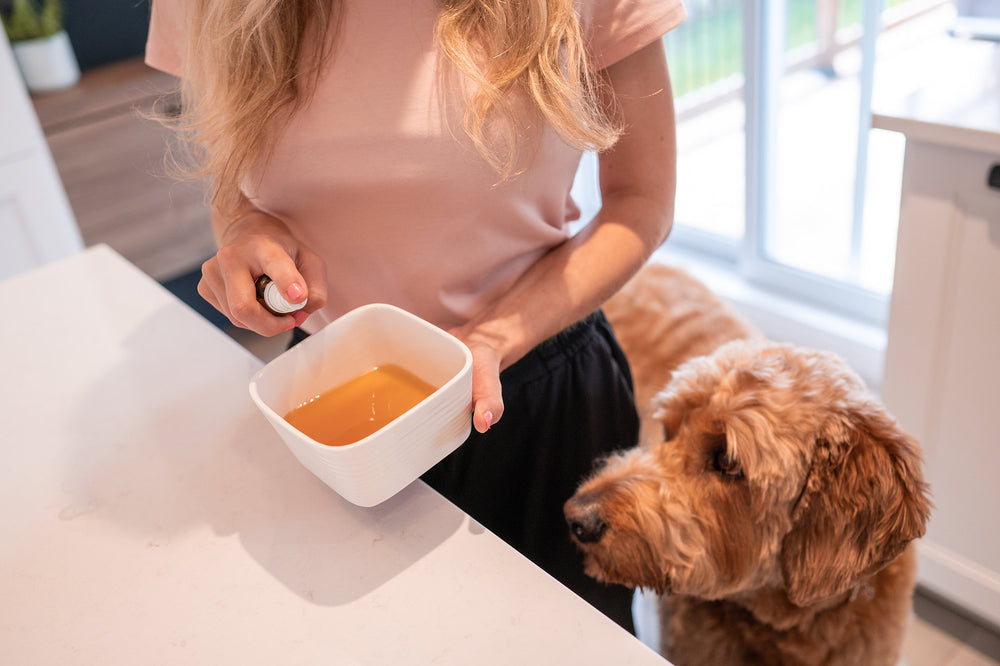7 Top Expert Tips to Keep Senior Golden Retrievers Active and Happy
List of Contents
Keeping your senior Golden Retriever active is key to their long-term health and happiness. Regular exercise supports mobility, prevents cognitive decline, and keeps your dog mentally and emotionally engaged.
Moreover, regular exercise helps prevent common senior dog issues like weight gain, arthritis, and reduced mobility. It also curbs boredom, promoting a more active and fulfilling life for your older Golden Retriever. Note: This post refers to senior dogs in good health, not those with chronic conditions.
Golden Retrievers are an active, intelligent breed that requires ongoing physical and mental stimulation. Consistent engagement helps them stay healthy, focused, and emotionally balanced, even in their senior years.
Quick note: Always consult your veterinarian or a trusted pet homeopathy specialist before starting new exercises with your senior Golden Retriever. A professional assessment helps ensure the routine is safe, effective, and tailored to your dog’s unique health needs.
What Senior Golden Retrievers Really Need from Exercise
As Golden Retrievers age, their energy levels decline, and their tolerance for extreme temperatures decreases. Adjusting exercise routines to match these changes helps keep senior dogs safe and comfortable.
Senior Golden Retrievers are more susceptible to issues like arthritis, hip and elbow dysplasia, and obesity. Without regular, appropriate exercise, these conditions can worsen and impact their quality of life.
Maintaining a healthy weight in senior Golden Retrievers requires balancing calorie intake with regular physical activity. Proper diet and exercise work together to support long-term health and mobility.
Pay close attention to signs of fatigue or discomfort in your senior Golden Retriever, such as heavy panting, slowing down, or limping. Recognizing these cues helps prevent overexertion and ensures safe, effective exercise.
7 Expert-Approved Ways to Keep Senior Golden Retrievers Active and Healthy
Many dog owners mistakenly think that any exercise is enough for an aging Golden Retriever. In this section, you’ll learn key tips to keep your senior Goldie active, healthy, and truly thriving.
#1. Make walks more effective for your aging Golden Retriever.

Daily walks remain essential for senior Golden Retrievers, but should be adjusted to match their age, stamina, and mobility. Slower, shorter walks still provide valuable physical exercise and mental enrichment.
Tailored walks promote healthy blood flow, support joint mobility, and provide important mental stimulation through fresh sights and smells. They also strengthen the bond between you and your senior Golden Retriever.
- Shorter, more frequent walks are ideal for senior Golden Retrievers, helping to reduce strain while keeping them active. Aim for 10-minute walks two to three times a day, adjusting for stairs or terrain as needed.
- Choose soft, low-impact surfaces like grassy parks or dirt paths to protect your senior Golden Retriever’s joints and paw pads. Avoid harder terrains such as asphalt or gravel, which can cause discomfort or injury.
- Protect your senior Golden Retriever from weather extremes by dressing them in a sweater during cold months and avoiding midday heat in summer. Always carry fresh water to ensure proper hydration during walks.
#2. Gentle water exercises help keep senior Goldens active.
Water activities like swimming offer a joint-friendly way to keep senior Golden Retrievers active and strong. Choose a safe, dog-friendly pool or calm lake to ensure a comfortable and secure experience.
Swimming offers an effective cardiovascular workout that’s easy on aging joints and muscles. It’s especially beneficial for senior Golden Retrievers or those recovering from injury, promoting strength and mobility without added strain.
- Always supervise your senior Golden Retriever during water activities to ensure safety. Start in shallow areas to build confidence, and use a well-fitted dog life vest, especially in deeper water or for less experienced swimmers.
- Rinsing your senior Golden Retriever with clean water after swimming helps remove chlorine, salt, and harmful bacteria. This routine protects their skin and coat, reducing the risk of irritation or infection.
- Swimming is typically not recommended for brachycephalic breeds like Bulldogs and Pugs, as their anatomy increases the risk of aspiration pneumonia. Always consult your veterinarian before introducing water activities to flat-faced dogs.
#3. Go for safe fetch and tug-of-war variations for senior Goldens.
Classic games like fetch and tug-of-war can be safely adapted for senior Golden Retrievers with lower intensity and shorter sessions. These modified activities keep your dog mentally engaged and physically active without putting stress on aging joints.
Modified fetch and tug games engage your senior Golden Retriever’s natural retrieving instincts while offering gentle full-body exercise. These activities help maintain muscle tone and support physical and mental well-being.
- Choose soft, senior-friendly toys to protect your Golden Retriever’s teeth during play. Keep fetch low-impact by using short tosses that minimize running and reduce joint strain.
- Play on soft, non-slip surfaces like carpeting to help your senior Golden Retriever stay stable and avoid injury. For gentle tug-of-war, use slow movements and reinforce a reliable release command to keep the game safe and fun.
#4. Stimulating indoor activities help keep your older Golden active and engaged.
When outdoor time is limited, indoor games are a great way to keep your senior Golden Retriever active and mentally sharp. Simple activities can provide valuable stimulation for both body and mind, even in small spaces.
Indoor play and mental games help prevent boredom and reduce anxiety in senior Golden Retrievers. These activities also curb destructive behaviors like excessive barking or chewing caused by pent-up energy.
Games like hide-and-seek with a favorite toy, treat, or even yourself can mentally stimulate your senior Golden Retriever. Try setting up indoor treat hunts to encourage gentle movement and engage their natural scent-tracking instincts.
Puzzle toys are a great way to offer hands-off mental stimulation for senior Golden Retrievers, keeping their minds sharp and engaged. Always ensure play areas are safe by removing fragile or potentially hazardous items.
#5. Include fun and safe DIY obstacle courses for aging Golden Retrievers in your checklist.
 Create simple obstacle courses for your senior Golden Retriever using everyday household items in your living room, basement, or backyard. These low-impact setups offer safe, fun ways to promote mobility and mental engagement.
Create simple obstacle courses for your senior Golden Retriever using everyday household items in your living room, basement, or backyard. These low-impact setups offer safe, fun ways to promote mobility and mental engagement.
Gentle agility and obstacle courses offer a balanced mix of physical and mental stimulation for senior Golden Retrievers. These activities help build muscle, improve coordination, and boost your dog’s confidence through achievable challenges.
- Set up low-impact agility obstacles using household items like broomsticks across boxes for hurdles, cardboard boxes for tunnels, and plastic cups for slalom courses. Keep layouts simple and safe to encourage movement without straining your senior Golden Retriever.
- Begin with simple obstacles and guide your senior Golden Retriever slowly to build confidence and ensure safety. Use plenty of praise and healthy treats to reinforce positive experiences and keep the activity enjoyable.
#6. Don’t forget training and new tricks for senior Golden Retrievers.
Consistent training keeps your senior Golden Retriever mentally sharp and emotionally engaged. Practice basic commands or introduce new, low-impact tricks to stimulate their intelligent and eager-to-learn nature.
Training and learning new tricks help keep your senior Golden Retriever’s mind sharp and body gently active. These sessions also reduce boredom and strengthen the bond between you and your dog.
- Golden Retrievers are eager learners who thrive on positive reinforcement and consistency. Keep training sessions short, enjoyable, and regular to maintain focus and make learning fun for your senior dog.
- Positive reinforcement using treats and praise helps your senior Golden Retriever stay motivated and confident during training. Teach useful tricks like “pick up your toys” or mentally stimulating ones like “find it” to keep them engaged and sharp.
#7. Varying activities to support joint health and mental stimulation in aging Goldens.
Incorporating a variety of activities helps work different muscle groups and prevents overuse injuries in senior Golden Retrievers. Mixing up their routine also keeps them mentally stimulated and more engaged in daily exercise.
Varying your senior Golden Retriever’s activities helps prevent repetitive strain on joints and muscles, reducing the risk of injury. It also keeps your dog mentally engaged and prevents boredom with their exercise routine.
- Try incorporating dog-friendly activities like yoga or canine Pilates to improve your senior Golden Retriever’s flexibility and core strength. These low-impact exercises support joint health and enhance overall mobility.
- Balance indoor and outdoor activities based on the weather and your senior Golden Retriever’s daily energy levels. This flexible approach keeps them active, comfortable, and safely engaged year-round.
- Supervised playdates with friendly, senior-compatible dogs offer both gentle physical activity and valuable social interaction. These positive experiences can boost your senior Golden Retriever’s mood, confidence, and overall well-being.
- Pay close attention to your senior Golden Retriever’s energy, mobility, and comfort during any activity. Adjust exercise intensity as needed to ensure their safety, well-being, and long-term enjoyment.
Why Immune Health Matters for Senior Goldens

Looking for a reliable, effective way to support your aging Golden Retriever’s immune system? Zumalka’s IMMUNOPET is a veterinarian-recommended supplement made with premium natural ingredients to strengthen immunity in both dogs and cats.
IMMUNOPET’s natural formula is designed to help strengthen your aging pet’s immune system by supporting white blood cell production and promoting healthy blood and lymphatic function. It’s a valuable supplement for helping enhance immune defense against bacterial and viral infections, and may help offer supportive benefits in serious conditions like cancer.
Additionally, as pets age, their nutritional needs increase. Zumalka’s PET MULTI helps fill those gaps to promote vitality, immune strength, and cognitive support. PET MULTI is a daily multivitamin specially formulated to help support cellular energy, metabolism, and overall wellness in pets of all ages.
With antioxidant-rich vitamins and minerals, PET MULTI aids in cellular regeneration and supports the Krebs Cycle, a key process for energy production and healthy organ function.
Caring for the Whole Dog: Holistic Wellness for Senior Golden Retrievers
As your senior Golden Retriever becomes less active, precise portion control is key to preventing weight gain. Measuring food carefully supports healthy aging and reduces the risk of weight-related health issues.
Limit treats to no more than 10% of your senior Golden Retriever’s daily calorie intake, and choose low-calorie or nutritious options. Managing treat consumption is essential, as obesity is a common and serious concern in older Goldens.
Routine veterinary check-ups are crucial for tracking your senior Golden Retriever’s weight and detecting age-related issues like arthritis or hip dysplasia early. Your vet can recommend tailored exercise plans, dietary adjustments, and supplements to support joint and overall health. For a more holistic approach, consider consulting a certified pet homeopathy specialist.
Providing warmth and comfort is essential for your senior Golden Retriever’s recovery and overall well-being. A soft, supportive bed in a draft-free area helps ease joint stiffness and promotes restful sleep. Prioritize cozy resting spaces, especially after activity or during colder seasons, to keep your dog comfortable and healthy.
A Final Word
With consistent, age-appropriate exercise and mental stimulation, your senior Golden Retriever can stay active, alert, and content well into their later years. Tailoring activities to their changing needs supports physical health, cognitive function, and emotional well-being. A thoughtful, balanced routine ensures your Golden enjoys a joyful, fulfilling life in every stage of aging.
Strengthen your bond with your senior Golden Retriever by making exercise a shared, enjoyable part of your daily routine. These moments not only support physical health but also deepen the connection you share.
As the saying goes, “A tired Golden Retriever is a happy Golden Retriever.” Regular, appropriate activity helps release energy, reduce stress, and promote overall well-being in your senior dog.
FAQs
How to mentally stimulate a Golden Retriever?
Mentally stimulate your Golden Retriever with puzzle toys, treat hunts, obedience training, and interactive games like hide-and-seek. Regular mental challenges keep them sharp, reduce boredom, and promote emotional well-being, especially in senior or less active dogs.
What is the best exercise for senior dogs?
The best exercise for senior dogs includes low-impact activities like short daily walks, swimming, and gentle play. These support joint health, maintain mobility, and promote mental stimulation without putting stress on aging bodies.
How to keep a Golden Retriever active?
Keep your Golden Retriever active with daily walks, swimming, interactive games, and mental enrichment like training or puzzle toys. Vary activities to prevent boredom, support joint health, and promote long-term physical and mental well-being.
How much exercise does a senior Golden Retriever need?
A senior Golden Retriever typically needs 30 to 60 minutes of low-impact exercise daily, ideally spread throughout the day. Tailor activities to their energy level and health to maintain mobility, manage weight, and support overall well-being.
How to calm down a hyper Golden Retriever?
To calm a hyper Golden Retriever, provide daily physical exercise, mental stimulation, and consistent training. Use calming techniques like gentle massage or structured routines to reduce anxiety and channel energy into positive, manageable behaviors.
How do Golden Retrievers get energy?
Golden Retrievers generate energy through a well-balanced diet containing high-quality protein, beneficial fats, and complex carbohydrates. Regular physical activity and mental stimulation further enhance their energy levels and overall well-being.
How to increase Golden Retriever lifespan?
Extend your Golden Retriever’s lifespan with a nutritious diet, consistent exercise, mental enrichment, regular veterinary checkups, and a stress-free home. Preventive care and healthy weight management play a vital role in longevity.
Can Golden Retrievers be left alone for 8 hours?
Golden Retrievers can be left alone for up to 8 hours occasionally, but it's not ideal. They thrive on companionship, exercise, and mental stimulation. Prolonged isolation may lead to boredom, anxiety, or destructive behaviors.









Leave a comment